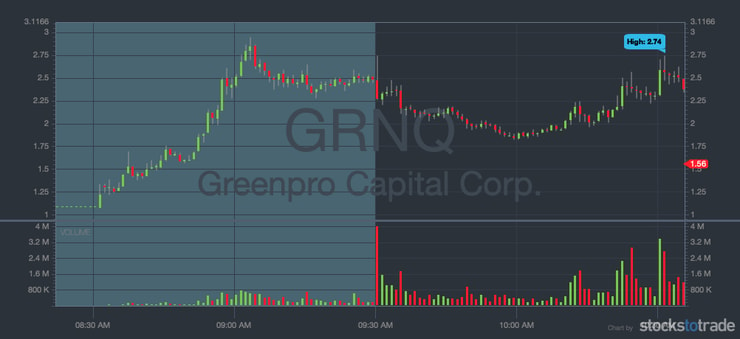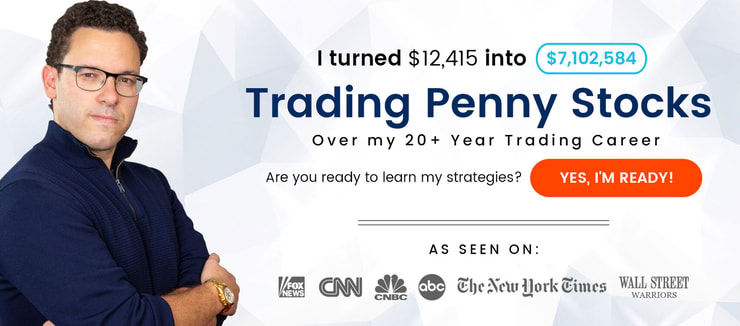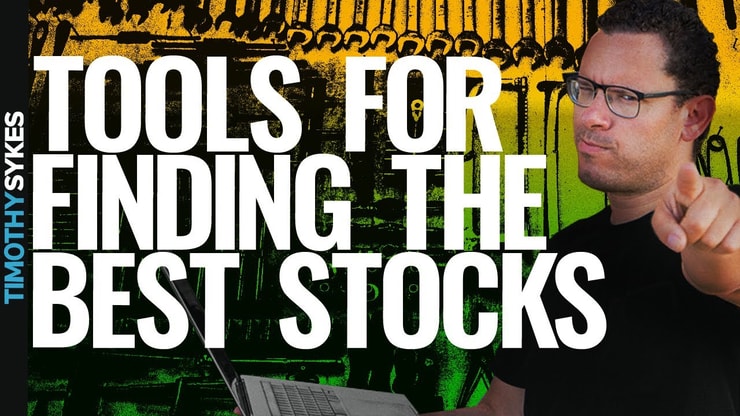It’s an intoxicating prospect … Learn when to trade premarket, make bank before the stock market even opens, go back to bed. I wanna make bank, bro!
There are plenty of so-called gurus out there who will tell you this is the way to get rich quick. All you have to do is follow their alerts…
Not so fast. The truth is, premarket trading can be volatile and risky. Newbies who don’t have enough understanding or knowledge to be able to take advantage of premarket movers can find themselves in nasty situations.
I’ve been trading for 20+ years … and even I don’t trade premarket that often.
I try to approach trades with a ‘retired trader’ mindset … The play has to be so good that it takes me out of retirement.
In the case of premarket trading, the trade has to be truly incredible — it’s gotta be worth the bigger risk, and worth making me wake up early. Like this one…
WOW $GRNQ now into the 1.70s now, early bird catches the worm here, thanks to @StocksToTrade and @sttbreakingnews I was buying in the $1.30s, nice little $1,500+ profit to start the day for me, if you aren't using these life-changing tools YOU ARE MISSING OUT!
— Timothy Sykes (@timothysykes) October 5, 2020
It’s not so much a question of if you should trade premarket. It’s more about knowing when to trade premarket. It’s not gonna be every single day.
It seems to be my life’s journey to set the record straight in an industry full of fakes … so I’ve gotta talk about this. I want to show you an example of a recent premarket trade, including how I found it and how I knew it was worthwhile.
This is one of the most important lessons I’ve had in a while, so read carefully and learn!
Table of Contents
Penny Stock Myths

Before we dig into my example of when to trade premarket, let’s clear up some penny stock myths. It’s important that you understand these things because they’ll help you understand my approach to premarket trading.
Myth 1: You Can’t Make Money With Penny Stocks
I kind of get why there are so many penny stock haters out there. The niche is full of fakes and misinformation. But as I see it, the big reason why people lose money trading penny stocks is because they have the wrong mindset.
People make two primary mistakes with penny stocks:
- They don’t understand the difference between trading and investing. They think that they should buy and hold these companies … then get burned when they inevitably fail.
- People think that they can get rich if they just latch on to someone’s alerts or some guru’s gimmick like only trading premarket.
This is why I teach — to prove that there’s another way to approach penny stocks. Namely, becoming a self-sufficient trader.
It’s the method that’s worked for me. I’ve been doing this for 20+ years, and I’m up $6 million over the course of my career.*
It’s worked for my students, too. I’ve got several confirmed millionaire students — my student Jack Kellogg is the latest to join the club.*
(*These results are not typical. Individual results will vary. Most traders lose money. My top students have the benefit of many years of hard work and dedication. Trading is inherently risky. Always do your due diligence and never risk more than you can afford to lose.)
Myth 2: You Need to Be Glued to Your Monitor at All Times
It’s a common misconception that you have to be glued to your monitor at all times to trade penny stocks. Nope.
True, you’ll be alerted to more opportunities the more screen time you log. But honestly, one of the things I love about penny stocks is that they give me so much freedom.
I can trade every day — but I don’t have to. Sure, in 2020 the crazy market volatility has kept me in front of my monitor a lot, but that’s only because there are so many opportunities.
The point is, you can make trading work for your schedule. Don’t get FOMO — just focus on the plays that are happening when you’re prepared and able to trade. Don’t force trades, and be willing to cut losses quickly.
Newbies always have FOMO when they take profits or cut losses too quickly as to what could've been an hour/a day later while veterans know it's part of the game, I don't mind selling too soon or cutting losses before a big bounce because that just means I was on the right track!
— Timothy Sykes (@timothysykes) June 18, 2020
In the case of the trade I’ll discuss here, it was a case of being in the right place at the right time. And it just so happened to be premarket.
I’m not an early riser. I happened upon this trade because I was by my computer at the time and it was a setup I understood. But if I’d missed it, I would have just waited for the next one.
It’s not just about when to trade premarket. It’s about when to trade, period. The ideal time to trade is when the right opportunities present themselves.
When to Trade Premarket: A Prime Example
The premarket isn’t as busy as the regular market hours. There’s a lot more volatility and a lot less volume. Less volume means that it can be a lot harder to enter or exit a position.
Because of this, I generally don’t trade premarket … unless the play is really, really good.
If and when it is, I’m willing to make an exception.
Here’s the perfect example of when to trade premarket…
More Breaking News
- How Will High Demands and Positive Ratings Shape AAOI’s Future?
- Is AMD’s Stock Skyrocketing Too Fast? Exploring the 4.5% Gain
- ReAlpha Tech Corp’s Strategic Shift: Cryptocurrency Embrace and AI Homebuying Expansion
Greenpro Capital Corp. (NASDAQ: GRNQ)
On October 5, 2020, I saw a premarket opportunity that I couldn’t resist.
Thanks to a StocksToTrade Breaking News Chat alert, I found out that Greenpro Capital Corp. (NASDAQ: GRNQ) had issued a press release about satellite product news.
Look at this BEAUTIFUL premarket chart of $GRNQ and recognize it more than doubled after the @sttbreakingnews alert I sold wayyyyy too soon I THE $1.60S, still making nearly $2k! Go signup at https://t.co/9qqyKfKepD right now, stop wasting gimme opportunities like this, my God! pic.twitter.com/RxZiHpnPyy
— Timothy Sykes (@timothysykes) October 5, 2020
I knew this catalyst had the potential to move the stock price. Why? Because it was a sympathy play to Elon Musk’s Starlink company, which has plans to create an interconnected satellite network.
Musk knows how to get attention. It’s a hot private company that he’s teased could make an IPO. There’s interest, but his company hasn’t gone public (yet).
In the case of Greenpro, there was a similar product from a startup.
I saw a lot of potential. And I knew a lot of traders would be interested, so I jumped in — even though it was only 8:37 a.m. Eastern. These things can move fast, and I knew I needed to take advantage of it immediately.
I bought in the $1.30s. My goal was to get out in the $1.40s or $1.50s. It exceeded my expectations. I got out in the $1.60s — little did I know it would go all the way up to nearly $3!
In this case, I made the right call by knowing when to trade premarket … But I made the wrong call by getting out too early! I made $1,625, but I could’ve made a lot more.*

Be Prepared: When to Trade Premarket
If you missed GRNQ or any trade — premarket or not — don’t stress. Learn from it and prepare for the next one.
What most people want to know is … ‘Tim, how do you know when to trade premarket?’
When someone asked me that on Twitter, here’s how I replied:
I use black magic!
— Timothy Sykes (@timothysykes) October 5, 2020
Fine, not really. Here are the ‘secrets’ I use to know when to trade premarket. Take notes!
News, Tools, and Knowledge
If you want to know when to trade premarket, you need a combination of the right news, tools, and knowledge.
News + Tools
Everyone wanted to know how I found GRNQ. It wasn’t just about reading the news — I used the right tool to find the kind of news I was looking for.
The Breaking News Chat add-on tool on StocksToTrade is an incredible resource that’s specifically designed for traders. It’s curated news for low-priced stocks.
It makes me ill to think of all the traders out there who aren’t taking advantage of this tool.
But having access to news alone won’t make or break a trade for you.
I always say that trading is like a battlefield … you gotta have the right weapons.
I see traders doing things like using market orders or sub-par brokers. Don’t shoot yourself in the foot! Use the right tools … give yourself any and every edge possible.
Educate Yourself
How did I know that GRNQ was a great opportunity? Because I understand things like informational inefficiencies and how they can be a powder keg near the market open — especially on a Monday morning.
If all of that sounds like a mystery to you, stop worrying about premarket trading. Start focusing on your education.
There hasn’t been a scientific study on it, but I can tell you this from experience … There are traders who take the time to learn how the penny stock niche works and newbies who follow alerts. Traders who focus on their education are roughly a zillion times more likely to make smarter trading decisions.
Are you willing to put in the time and energy to educate yourself?
Here’s a good starting point: my 30-Day Bootcamp. It’s my best-reviewed product ever — I created it with my student Matthew Monaco, who just passed 375K in profits.*
It’s less than $100 — we made cheap so it would be widely accessible.
It’s a great beginner’s tool. It’s designed to give you an education on the niche and to help you get in the right mindset for trading. Many students use it as a stepping stone to applying for my Trading Challenge.
Are You Ready?
It may have been luck that I was at my computer when the news about GRNQ broke … But it’s not luck that I knew how to take advantage of the play.
I’ve taken 20+ years to learn what I’m doing as a penny stock trader. It’s not luck or manipulation. It’s strategy.
Before you dare trade in premarket, you must be able to honestly answer these questions:
- Is it in play?
- Is there news?
- Do you know what you’re doing?
If you don’t understand these things yet, it doesn’t mean you can’t ever trade premarket. It just means you need to work on your mindset and build your knowledge.
The question of when to trade premarket isn’t so much about the time of day, but whether there’s a real opportunity.
If there’s an opportunity, be ready to capitalize on it! The more knowledge you have, the better perspective you’ll have on trades. The better perspective you have, the better decisions you’ll make about any trades — regardless of the time of day.
Do you get this? Leave a comment and say “I will capitalize!” or “I will capitalize BETTER!”





Leave a reply